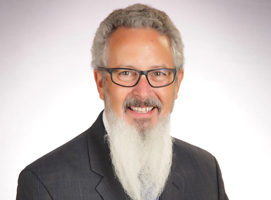student success
Embracing diversity, all sorts

One of the great pleasures of my job as a retention consultant is the diversity of the campuses I work with: public, private, two-year, four-year, secular, faith-based, single purpose, liberal arts, and so on. Diversity within those institutions is amazing too, from those primarily serving “traditional” students to those serving primarily working adults; some majority male, but most majority female; some with a single race majority, and some with a balance of students from a number of racial backgrounds. Some campuses are in transition from one dominant student profile to another. Perhaps it is my bias, but I think the diversity of our institutions, and the diversity of our student populations is one of the great strengths of higher education in America.
Imagine how disappointed I was, then, when ACE released a report last week that showed that the postsecondary attainment rate for Hispanics and African-Americans aged 25-34 has dipped in comparison to their older peers. At a time when so many are working so hard to foster success among diverse student populations, attainment is slipping. And it’s slipping in spite of evidence from our Noel-Levitz research that African-American and Hispanic students report slightly stronger levels of determination to finish a degree than their White peers. What can we do then to help African-American and Hispanic students be successful in their courses, stay enrolled, and earn a degree?
I suggest the following principles to keep in mind when working to support academic success and degree attainment of diverse student populations:
- Consider the needs of the family, not just of the student. When building orientation programs and first-year experiences, weave in the transition and educational needs of the family. Going to college is a big deal, whether students are going to a two-year or four-year college. Family support is essential. Help families learn how to support the students in their midst.
- When building first-year experience programs, help students understand how all of their coursework is preparing them for a career after college. Even at small liberal arts colleges, students are thinking about their after-college experience. First generation students in particular often fail to see why general education courses are necessary, or why they must take developmental courses before getting to the “real” college material. We understand that most working adults will work in numerous careers in their lifetime, and that general preparation is at least as important as major preparation. We must help students understand why we ask them to do what we do.
- We must do a better job of collecting outcome stories about our graduates. Armed with those outcome stories, we must build communication strategies that show our students—especially African-American and Hispanic students who may be first generation students and may not be convinced of the value of an education—that education can make a huge difference in their lives. I’m reminded of a Time article from September showing the results of a study that found in 147 of 150 of the largest U.S. cities, the median incomes for young, childless women are 8 percent higher than for their male peers. The study’s author, James Chung, attributes the earnings differential primarily to education. Finishing that degree matters!
- We can document the long-term economic benefits of degree attainment to our students, but we must help our students manage the immediate economic costs. So often I see amazing levels of support offered to new students and their families during the recruitment process. Also too often, I see almost no help for families struggling to complete the financial aid process the second or third time around. We must be as intentional in helping our continuing students navigate the financial aid processes as we are with our prospective recruits.
As I reflect on what I’ve written above, it occurs to me that all of these strategies are, well, just good retention strategies. This blog entry could be as much about first generation students as it is about African-Americans or Hispanics. And truly, these strategies can support mainstream or majority students too (however we define mainstream or majority). Program differences for diverse student populations are often found in their focus or emphasis.
The keys are to know your students; understand their backgrounds, their strengths and challenges; and then act on what you know. Tailor your programs to meet the needs of the students you have, not the students some on your campus might wish you were serving. Help all see how the education you are providing can be life-changing.
